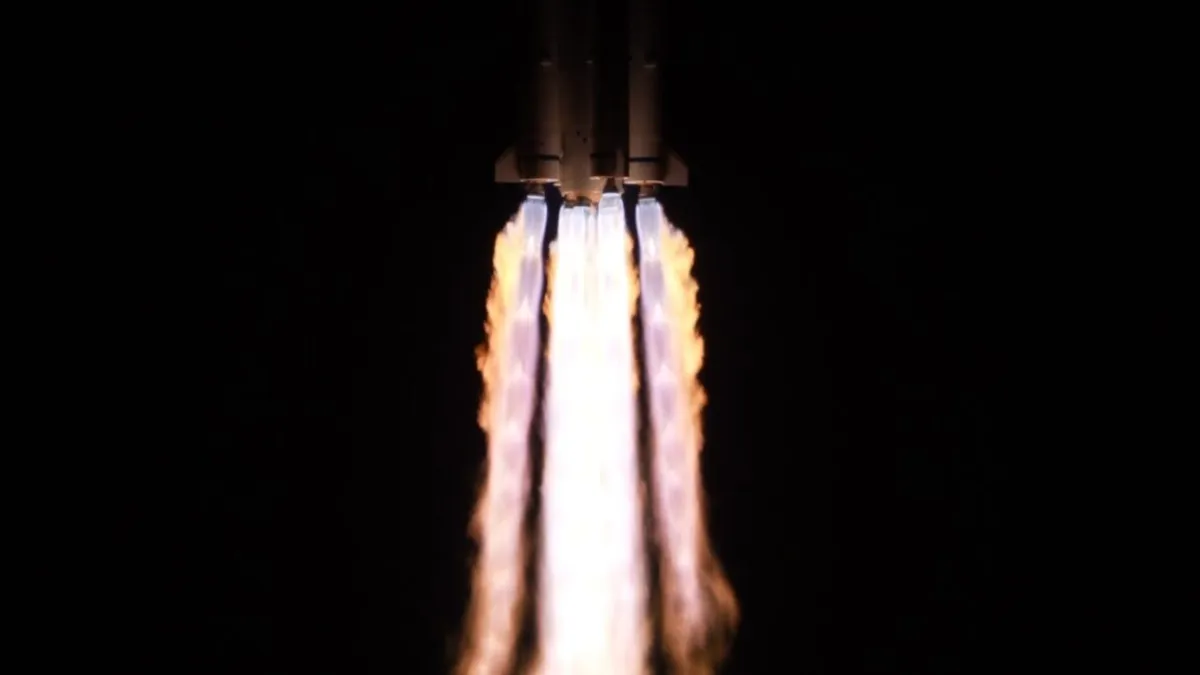
A Chinese spacecraft designed to collect specimens from an unexplored asteroid successfully launched on Wednesday from a military-run spaceport located in the mountainous interior of China. The liftoff occurred aboard a Long March 3B rocket at 1:31 PM EDT (17:31 UTC) from the Xichang launch base, marking the beginning of the second mission in a series of Chinese probes aimed at exploring the Solar System. This mission, designated Tianwen-2, follows the successful Tianwen-1 mission, which made history as the first Chinese spacecraft to land on Mars in 2021.
Chinese officials confirmed that the 2.1-metric ton Tianwen-2 spacecraft unfurled its fan-shaped solar arrays shortly after launch, signaling a promising start to its decade-long journey through the Solar System. The objectives of Tianwen-2 are two-fold; the spacecraft will first travel to the near-Earth asteroid 469219 Kamoʻoalewa, also known as 2016 HO3. Upon arrival, it will retrieve a rocky sample from the asteroid's surface, with plans to return this material to Earth for analysis in late 2027.
After the spacecraft releases its sample carrier upon landing on Earth, Tianwen-2 will adjust its course to investigate a mysterious comet-like object situated between the orbits of Mars and Jupiter. This mission will mark a significant achievement, as Tianwen-2 will be the first Chinese spacecraft to retrieve celestial material from beyond the Moon. China has previously conducted two successful sample retrieval missions on the Moon, establishing its position as a leader in 21st-century lunar exploration.
While China has made significant strides in lunar missions, it still trails behind the United States in terms of comprehensive Solar System exploration. NASA and Japan's space agency have returned asteroid samples in the past, while the European Space Agency has orbited comets. Tianwen-2 aims to accomplish both objectives within a single mission, making it a groundbreaking endeavor.
The asteroid targeted by Tianwen-2, Kamoʻoalewa, is less than 60 meters (approximately 200 feet) in diameter and is believed to consist of material ejected from the Moon long ago. Exploring this asteroid could potentially confirm this hypothesis. Kamoʻoalewa is particularly noteworthy as it is classified as a quasi-satellite of Earth, meaning its orbit around the Sun closely matches that of our planet. This proximity makes Kamoʻoalewa an attractive target for a sample return mission, allowing Tianwen-2 to complete its roundtrip journey in just two-and-a-half years.
In comparison, Japan's Hayabusa 2 mission took six years from launch to return to Earth, while NASA's OSIRIS-REx mission took seven years. Both of these previous missions targeted asteroids that were farther away than Kamoʻoalewa. Tianwen-2 is expected to arrive at the asteroid in July 2026, where it will begin searching for a suitable location to collect samples.
The Tianwen-2 spacecraft will employ several techniques for sample collection. One method involves maneuvering close to the surface, matching the asteroid's rotation, and extending a robotic arm to gather specimens. Another approach will include a touch-and-go landing, similar to the sampling methods used by Hayabusa 2 and OSIRIS-REx. Additionally, scientists hope to experiment with a technique known as "anchor-and-attach," where the spacecraft will secure itself to the asteroid's surface using four arms equipped with drills.
Although Chinese officials have not disclosed the exact amount of material expected to be collected, it is reported that Tianwen-2 is designed to retrieve at least 100 grams of rocks and dust from Kamoʻoalewa. This mission will face challenges due to the asteroid's rapid spin rate of approximately 28 minutes per rotation, which complicates the spacecraft's maneuvers. Once the samples are collected, Tianwen-2 will depart the asteroid in early 2027 and head back to Earth, where it will release a reentry module containing the asteroid samples for landing later that year.
Research derived from Tianwen-2's samples will focus on analyzing their basic physical properties, chemical compositions, mineral content, and isotopic structures, as detailed in a paper published in the journal Earth and Planetary Physics. The findings from this mission could enhance our understanding of asteroids and may provide valuable insights into the history of the Earth and the Moon. Confirming Kamoʻoalewa's origins as lunar debris could open new avenues for understanding the Moon's evolutionary history.
After delivering the asteroid specimens back to Earth, Tianwen-2's mothership, equipped with 11 scientific instruments, will embark on a new mission phase. It will travel to observe an intriguing object in the asteroid belt known as 311P/PanSTARRS in the mid-2030s. This object belongs to a rare class of bodies known as active asteroids or main-belt comets, which exhibit characteristics similar to both asteroids and comets.
Until recently, China's space program primarily focused on lunar exploration. However, with the successful Tianwen-1 mission, China has demonstrated its capability to explore beyond the Moon, paving the way for future missions. Following Tianwen-2, China plans to launch the Tianwen-3 sample return mission to Mars in 2028, which could potentially be the first to return pristine Martian samples to Earth. Additionally, there are plans for Tianwen-4, aimed at traveling to Jupiter and studying its moon Callisto, as well as missions to investigate Venus and Neptune in the 2030s.
While NASA continues to maintain a diverse array of missions throughout the Solar System, including a planned expedition to Saturn's moon Titan with the Dragonfly mission in 2028, the Chinese space program is rapidly expanding its capabilities. As the race for space exploration intensifies, Tianwen-2 signifies China's ambition to become a key player in the ongoing quest for knowledge about our Solar System.